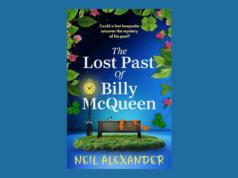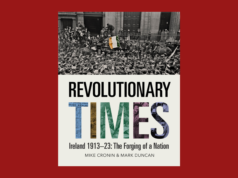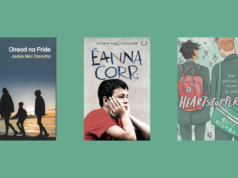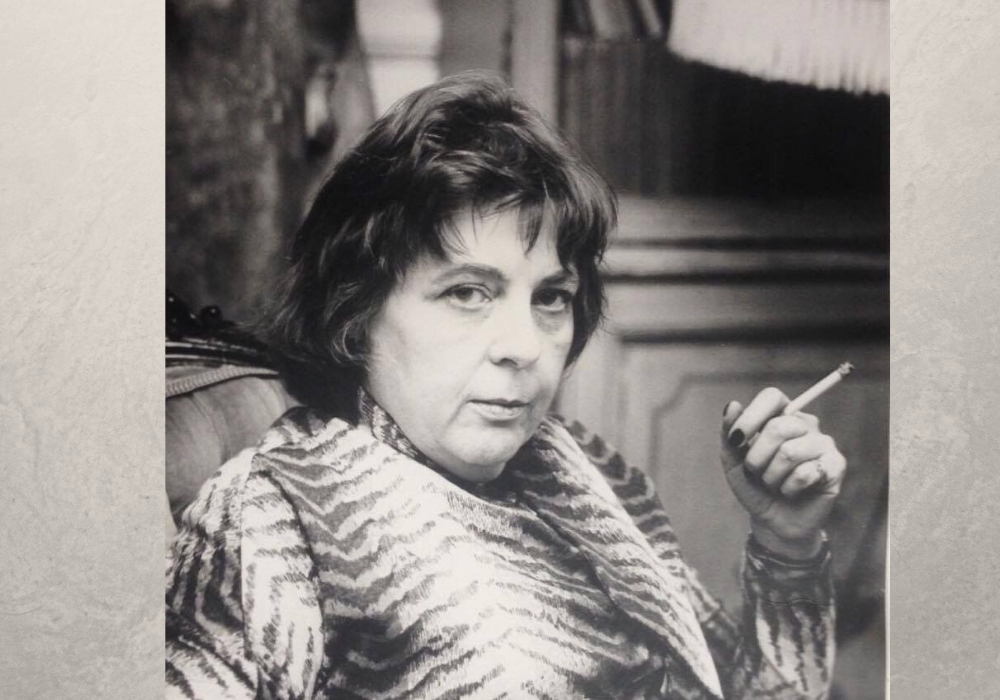
In this article Miles Leeson assesses the legacy of Brigid Brophy and asks, as she herself did, was she an Irishwoman?
Brigid Brophy—novelist, activist and campaigner—is undergoing something of a renaissance this year. As well as the republication of her novel The Snow Ball this coming November by Faber, Edinburgh University Press has recently published the first collection of academic work celebrating her career in all its variety; her work on animal rights is also beginning to be more widely recognised. During her life she wrote seven novels, numerous reviews, essays and non-fiction works, and was a tireless campaigner for the anti-vivisection movement, as well as being the prime mover behind the public lending rights campaign. Yet, until relatively recently, she had almost disappeared from literary consciousness following her diagnosis of multiple sclerosis and her death in 1995. Thankfully, she is now being recognised as a major force in British cultural life of the ’60s and ’70s. Each of her seven novels, as diverse as they are, encapsulates one facet of Brophy’s individualism.
But how Irish was she? She certainly had a pedigree going back through her father, the novelist John Brophy (fervently Irish, as she describes him in interview), and she imagined her ancestral home to be in Ballybrophy in County Laois, which she visited regularly as a child. In her essay ‘Am I an Irishwoman’ from 1965, she has this to say about her background:
‘The geography and history of Ireland hold my imagination in a melancholy magic spell. Dublin and Limerick are cities beautiful to me not only with some of the most superb and most neglected architecture in Europe but with a compelling litany, a whole folklore, or tragic and heroic associations…I seem to have made more Irish choices than chance would warrant: the dearest to me of my contemporary fellow-writers is Irish…I chose to marry an Irishman without even knowing that he was one – and thereby ensured that, whereas neither he nor I is Irish on both sides of our ancestry, our child is more Irish than either of her parents.’
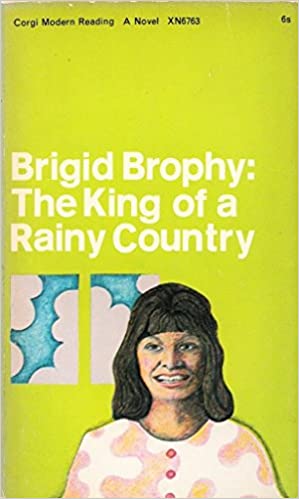
A number of her heroes are also Irish, as perhaps one might expect. She regularly described herself as ‘a Shavian’ and her non-fiction work frequently highlights Shaw’s influence upon her. Although she appreciated Wilde, she preferred Shaw’s thought, as she believed it was far more systematic and fitted in to her own humanist world view; one of her greatest disappointments was being passed over to write his biography in the 1970s. Certainly, if we look at the similarities between Shaw and Brophy, we can see a resemblance between his Pygmalion and her Flesh from 1962 and her book of fables and essays The Adventures of God in His Search for the Black Girl (1973) directly references Shaw throughout. Brophy, however, makes her Irishness her own, most importantly in her most accessible novel, The King of a Rainy Country (1956), and her experimental novel of 1969, In Transit.
The King of a Rainy Country is the story of Susan (a ‘stunted self-portrait’ of herself, Brophy would claim), a young woman who lives in post-war London in a quasi-bohemian set-up with Neale, a friend with fewer ‘benefits’ than one might imagine at the outset. Neale works as a porter at a local restaurant, whilst Susan takes on a role typing for a bookseller. The bookseller, one Finkelheim (not his real name, an assumed Jewish name as he thought it would work better in the book trade), deals in ‘Irish books’:
I discovered the Irish book which Finkelheim had referred to in the first letter I had typed for him. It was called A Thousand and One Irish Beauties: there were perhaps a hundred photographs in it, of dark-haired girls, all rather sad, lumpish and peasant-like.
Neale was delighted when I told him at supper. “Ha. A pornbroker.”
One of the models in Finkelheim’s books, Cynthia Bewly, sparks a trip across Europe that ends in Venice. This novel in three ‘movements’ (Brophy was very keen to model her work on operas) is the place to start with her fiction.
In Transit is different in both form and content. An experimental novel set in an airport, the central character is Irish, Pat O’Rooley. Both awkward and introspective, Pat becomes stuck ‘in transit’ and begins to forget both their sex and gender, and the novel becomes a labyrinthine monologue as the reader, and Pat, try to discover a firm footing through Pat’s fleeting interactions with other characters. References to being Irish, and to Ireland, frequently occur:
‘Perhaps I fly everywhere in order to offer my parents the opportunity of revenge. I am playing Russian roulette by riffling the international flight schedules. But then I was too thin a substance to will my destruction. I recovered: and when I did so, I was no longer Irish.’
This spiky paragraph is expanded a little further on in the novel:
‘We speak English as a foreign language, even when we have no other … As foreigners we use the language logically … It’s idiom that sells the boarding passes and raises the airportcullis. Imperialism gave us Irish/Indians/West Indians its vocabulary, but the idiom wouldn’t travel. Imperialism steeped us in its pan-citizenship and receded, leaving us the first non-citizens.’
Clearly, then, Brophy is not just taking aim at gender stereotypes and their capitalist underpinnings but taking aim at the language that keeps every individual separated from community through language and the use of violence. This is heightened towards the end of the novel as the airport is taken over by a small group of revolutionary manual workers who, in turns, congratulate each other without any sign of real change. As her most overtly political work, we should not be surprised to see Brophy criticising what she saw as the obsessive nature of such groups at the end of the 1960s. Her final novel, Palace Without Chairs, moves the political intrigue to a fantasy realm, Evarchia, but is much less overt in its criticisms of Anglo–Irish political life. Brophy’s roots were, however, vital to her, as her daughter Kate Levey remembers:
‘Brigid wrote of her infancy that it was ‘lapped about with Irishness, with framed reproductions of paintings of Irish mountains on the walls and books about turf-cutters’ donkeys on my bookshelves.’ Fortunately, her writer father introduced her to Yeats, Joyce, Shaw and the architecture of Dublin. There was no trace of turf in my childhood, but I did wear shamrock to school: Brigid was glad I was doubly Irish (my father’s family name was O’Shaughnessy). Brigid joked about Irish words and traits, but never dismissed her heritage. Late in life she used the poignant pseudonym, ‘Derry Lough’; that’s where her father’s family had a farm.’
Brophy’s fierce Anglo-Irishness, then, can be found in both her fictional and non-fictional work, and the dismay she felt about the state of Irish politics and activism in the mid-twentieth century spilled over into her own fight for animal rights, public lending rights, humanism, and so much more.
Listen to a podcast about Brigid Brophy, hosted by Miles, here: https://soundcloud.com/user-548804258/brigid-brophy-podcast.
You can discover more about her at www.brigidbrophy.com.
Miles Leeson is the Director of the Iris Murdoch Research Centre at the University of Chichester. His latest work on Brophy and Murdoch appears in R. Canning and G. Kimber (eds) Brigid Brophy: avant-garde writer, critic, activist, Edinburgh University Press, 2020.








